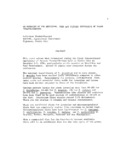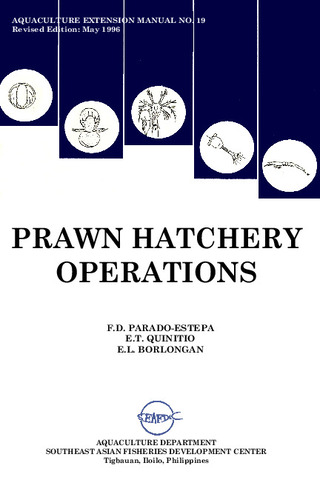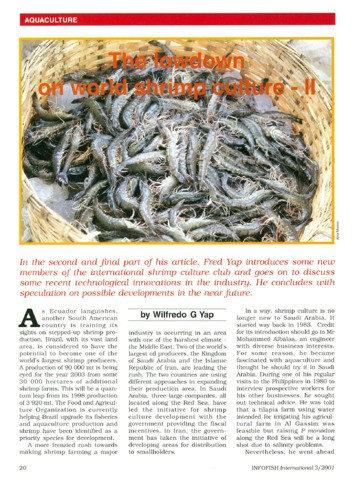Survival, growth and production of Penaeus monodon Fabricius at different stocking densities in earthen ponds with flow-through system and supplemental feeding.
Share
Abstract
Penaeus monodon juveniles (P53-P54, 0.45 g) were stocked in 200 m2 earthen ponds with water exchange rate of 5-10% daily, and reared for 3.5 months. Stocking density levels of 2.5, 5.0, 10 and 20 prawns/m2 were designated as treatments A, B, C and D, respectively. Pelletized formula feed was given daily from the second week of stocking at 10% of biomass and was reduced bi-weekly by 1% to a final rate of 5% of biomass.
Significantly, high survival was achieved in treatment A, 98.6% followed by B, 95.3%; D, 87.6% and C, 86.5% (P < 0.05). The final average body weight obtained varied inversely with stocking density. Mean body weight for treatments A and B were significantly higher than those of treatments C and B. Results also showed significant differences among all paired means of the final weights except between treatments C and D.
Description
Contribution No. 104, Aquaculture Department, SEAFDEC.
Suggested Citation
Apud, F. D., Gonzales, K., & Deatras, N. (1981). Survival, growth and production of Penaeus monodon Fabricius at different stocking densities in earthen ponds with flow-through system and supplemental feeding. Fisheries Research Journal of the Philippines , 6(2), 1-9. http://hdl.handle.net/10862/1108
Taxonomic term
Collections
- AQD Journal Articles [1249]
Related items
Showing items related by title, author, creator and subject.
-
An overview of the nutrition, feed and feeding techniques of prawn penaeid/shrimps
Piedad-Pascual, Felicitas (Philippine Council for Aquatic and Marine Research and Development, 1989)This paper echoes what transpired during the first International Conference of Penaeid Prawns/Shrimps held in Iloilo City in December 4-7, 1984, particularly on the Nutrition nd Feed Development. Around 25 papers were ... -
Prawn hatchery operations
Parado-Estepa, Fe D.; Quinitio, Emilia T.; Borlongan, Emeterio L. (Aquaculture Department, Southeast Asian Fisheries Development Center, 1996-05)The manual, an updated version of the 1984 SEAFDEC/AQD manual, presents the underlying principles and step-by-step instructions of prawn larval and post-larval rearing. The techniques described are not only applicable to ... -
The lowdown on world shrimp culture - II
Yap, Wilfredo G. (INFOFISH, 2001)This paper introduces some new members of the international shrimp culture club and goes on to discuss some recent technological innovations in the industry, particularly the polyculture of tilapia (mainly Oreochromis ...




